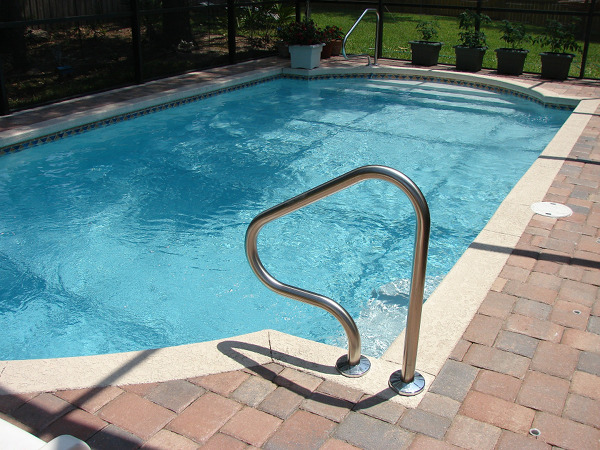
Reviewed by Andrada Simion, Master of Science in Chemistry
Soft water, or water that is very low in the common mineral calcium, can be found in many municipal and regional water systems around the world – but it can pose a hidden threat to home owners, corroding the metal of fixtures, filters, and heat exchangers. Even more insidiously, since calcium oxide (or lime), the primary source of calcium ions in “harder” (more calcium-rich) water, is a crucial ingredient in concrete, plaster, vinyl, and grout production, overly soft poolwater can threaten to leach lime out of these materials in pool walls, compromising their structural integrity – so balancing hardness and combating overly soft poolwater is a crucial task for pool owners everywhere.
- Test the calcium levels in the pool to determine next steps: the first and last steps of any pool hardening protocol should always be testing the actual calcium content, which can be done easily with commercially available test strips; determining precisely how far the poolwater is below its recommended hardness level (which varies by pool and by climate, but tends to fall in the range of 200-400 parts per million of calcium), or how effectively you’ve remediated the softness problem, allows you to calibrate your next steps to be maximally effective.
- Check your pool for major inflows from the outside: if water is flowing in from external sources (like runoff from rain or snow), this can lower the content of dissolved minerals substantially – so check for potential sources like a patio, deck, or yard, and, if there is, take steps to physically block it from entering.
- Stop using sequestering agents, if applicable: sequestering agents are chemicals that some pool owners use to chelate (bind with and neutralize) metal cations in poolwater that may cause stains on pool surfaces or fixtures – but, since calcium is one of these ions, their use, while not changing the underlying calcium concentration in the water, can cause some of the same effects as processes that directly cause hardness to decrease, so their application should be immediately stopped if soft water becomes a problem.
- Decrease the frequency with which you drain your pool (if safe to do so given your maintenance routine): draining is of course a fundamental tool for maintaining a safe, healthy, and clean pool, but simply allowing more of the water to evaporate in between draining cycles – especially in hot, dry, and/or sunny climates in which evaporation is rapid – can be a natural, cost-effective, and easy way to increase hardness without having to purchase expensive additives or go through the trouble of another type of intervention.
- Decrease use of flocculant in your cleaning regimen: flocculant, or floc, is a tool that causes tiny floating grains of sediment to form large clumps that can then be easily removed from the poolwater; however, floc particles can also cause minerals like calcium to coalesce and be removed as well, so, if overly soft water is a concern, using a clarifier or an upgraded filter to remove sediment and remediate cloudiness in place of floc treatments.
- Add a commercial hardening agent: the most classic and direct way to increase poolwater hardness is to add a chemical specifically designed for the job, which one can purchase in almost any pool supply store or catalog; calcium chloride, the most effective and affordable agent in most cases, can be used by dissolving 1.25 pounds of its powdered form per 10,000 gallons of poolwater and per 10ppm required increase in calcium concentration in a bucket of warm water and slowly pouring the resulting solution around the deep end of the pool.
Overly soft water in swimming pools can be a serious threat to the long term sustainability and enjoyability of your new setup – so taking action with these six easy steps is key to protecting your investment.